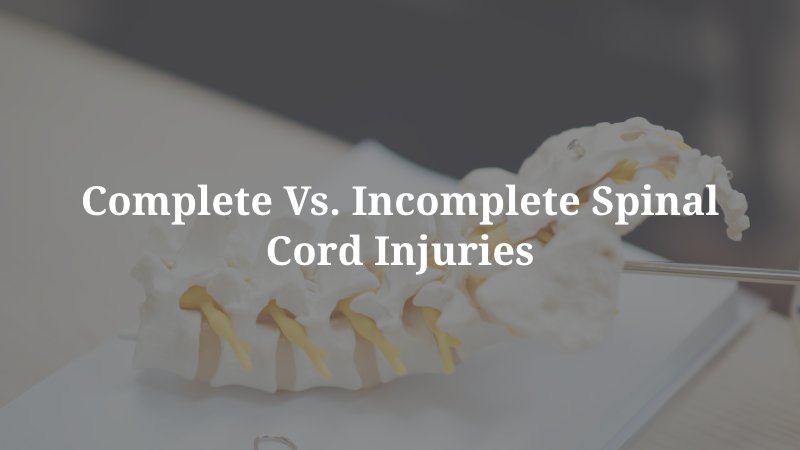Complete vs. Incomplete Spinal Cord Injuries

There are two main types of spinal cord injuries: complete and incomplete. Both can dramatically affect a person’s life, but here are the differences.
What is a Spinal Cord Injury?
A spinal cord injury occurs when there is damage to the spinal cord or the nerves at the end of the spinal canal. This damage can result in a loss of sensation, strength, and other bodily functions below the level of injury.
Complete Spinal Cord Injury
A complete spinal cord injury happens when the spinal cord is completely severed or damaged, resulting in a total loss of sensory and motor function below the level of the injury. This means that the person will not be able to feel or move anything below where the injury occurred. A complete spinal cord injury is typically caused by trauma, such as a car accident or a fall. However, diseases such as multiple sclerosis or polio can also lead to a complete spinal cord injury.
The exact symptoms and level of disability caused by a complete spinal cord injury will depend on the location and severity of the injury, as well as other factors such as the individual’s age and overall health. In some cases, complete spinal cord injuries can lead to a condition called spinal shock. This condition can cause a temporary loss of all reflexes below the level of the injury, including the ability to move the limbs or control bowel and bladder function.
Incomplete Spinal Cord Injury
When there is only partial damage to the spinal cord, it is considered an incomplete spinal cord injury. Unlike a complete spinal cord injury, some of the nerve fibers are still intact, allowing the person to retain some level of sensation or movement below the injury. The severity of an incomplete spinal cord injury can vary greatly, depending on the extent of the damage and other individual aspects such as age and overall health.
Long-Term Impact of a Complete vs. Incomplete Spinal Cord Injury
In general, an incomplete spinal cord injury is associated with better long-term outcomes compared to a complete spinal cord injury. Since some sensory or motor function is preserved with an incomplete spinal cord injury, it can allow for some degree of recovery and rehabilitation. The extent and rate of recovery will depend on the type and severity of the injury. Still, in many cases, individuals with incomplete spinal cord injuries are able to regain some function and independence over time. For example, they may be able to walk with assistance, use adaptive devices to improve their mobility, or experience spontaneous recovery.
On the other hand, with a complete spinal cord injury, all sensory and motor function is lost below the level of the injury, which can result in significant and permanent disability. Individuals with complete spinal cord injuries typically require lifelong medical and rehabilitative care. They may have limited mobility, impaired bladder, and bowel control, and increased risk of pressure sores, infections, and other complications.
However, it is important to note that the long-term impact of either type of spinal cord injury can be highly individualized, and no two cases are exactly alike. In addition, many factors can influence the course and outcome of a spinal cord injury, including the quality and availability of medical care, the person’s motivation and attitude, and the level of support and resources available to them.

